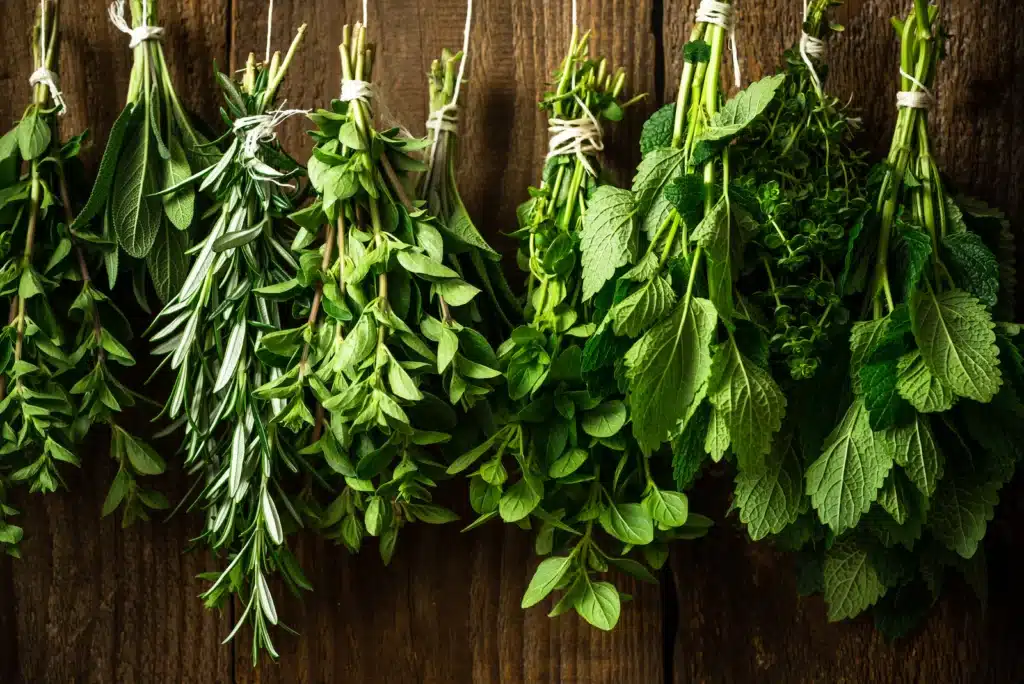
Author: Rachel Cook, Advanced Student
Sourcing herbs
When it comes to sourcing herbs, considerations include sustainability, cost, quality, and quantity. Supporting your local apothecaries is a great way to reduce shipping demand and to support local business. However, if you are looking to buy a large quantity of herbs or you do not have an apothecary close by, you might want to consider buying online. Mountain Rose Herbs is a wonderful company that sources their herbs sustainably and with high quality in mind. Another option is buying directly from an herb farm near you. You can often buy large quantities of herbs from farms who sell at wholesale price. This is an ideal option if you are looking for fresh herbs and to save money. Of course, always look for farms that use organic growing practices.
Wild Harvesting
If you are going to wild harvest, there are a few very important things to keep in mind. First of all, some plants are poisonous and can even kill you. Poison Hemlock (Conium maculatum), Water Hemlock (Cicuta spp.), Foxglove (Digitalis purpurea), Death Camas (Zigadenus spp.), Giant Hogweed (Heracleum mantegazzianum), Poison Ivy (Toxicodendron radicans), Poison Oak (Toxicodendron diversilobum), and Poison Sumac (Toxicodendron vernix) are the most common toxic plants in North America. Familiarize yourself with all of these plants before considering wild harvesting.
Another thing to keep in mind is the sustainability and ethics of a potential harvest. Wild harvesting can be incredibly rewarding and an experience that connects us deeply with the land, but it has become so popular that many of our favorite herbs are now endangered. Further, some of these plants are sacred to the Indigenous people of our land and along with the herbs, their traditions are threatened. Osha is an example of one such herb in Colorado. For a complete list of medicinal plant species at risk, the United Plant Savers website is a great resource.
As a general rule of thumb when harvesting plants that are not endangered, get to know your stand. A stand is the land and all of the other plants where your herb is growing. Developing a relationship with the stand by returning annually will allow you to assess whether or not it is remaining healthy over time. Choose areas where there is an abundance of your plant and don’t take the root unless it is absolutely necessary. For prolific and resilient species like Dandelion and Burdock, harvesting the root is not an issue. However, for plants like Osha, it is better to leave them in the ground. If you are not sure whether or not to harvest an herb, do your research. Is it rare or endangered? If not, begin by sitting with it. Observe how much of the plant there is and consider the smallest amount that you are willing to take.
Finally, be prepared. Bring the right tools for your harvest. Items you might need include jars, bags, scissors, gloves, a knife, and a trowel/shovel. For making a tincture on the spot, bring a jar with alcohol. A notebook and pen come in handy for recording any important information and a sharpie for writing on bags.
Grow Your Own Herbs
For ethical reasons, sustainability, potential contamination, etc., sometimes wildcrafting is not the best option. Fortunately, we have other options, and one of my personal favorite ways to source herbs is by growing them myself. Even if you don’t have much space, you can always put a few pots on your windowsill or balcony. You could even look into community garden options. Consider your climate when choosing what herbs to plant and also think through how much of that plant you will need. This seems obvious but it’s easy to end up with more of an herb than you know what to do with (of course go share it with a friend or neighbor if you do). If you don’t want to grow a plant from seed, you can even go buy a plant starter from a local nursery. Now is a great time to look to your local apothecary for Spring time plant sales.
Sources:
La Forêt Rosalee de, and Emily Han. Wild Remedies: How to Forage Healing Foods and Craft Your Own Herbal Medicine. Hay House, Inc., 2020.
Fundamentals class notes (Herbs of Commerce)
